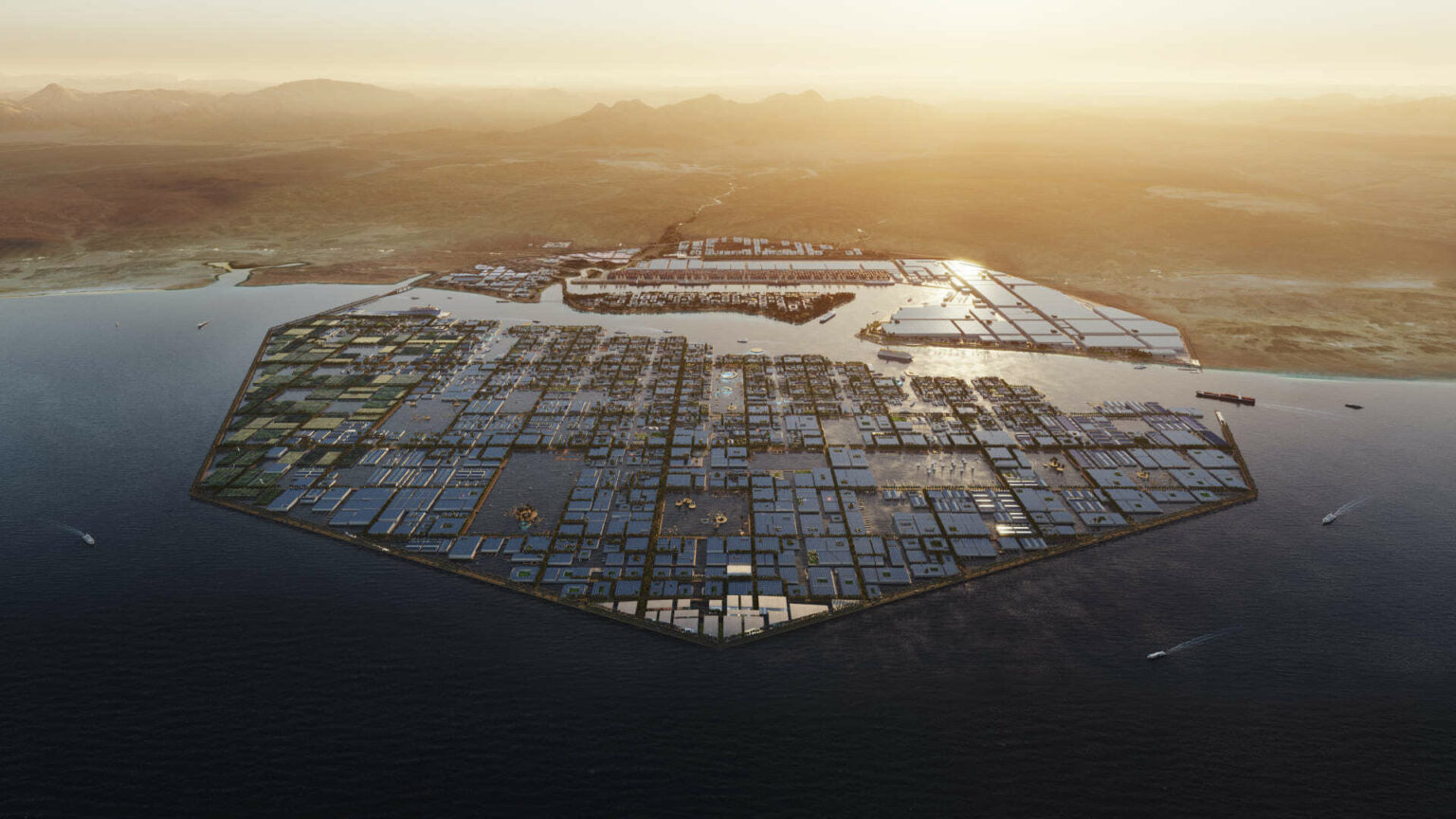The world’s largest green hydrogen plant, located in Oxagon City, Neom, Saudi Arabia, is set to become a landmark in sustainable energy production.
Slated to produce up to 600 tonnes of green hydrogen daily by the end of 2026, this ambitious project aims to decarbonize critical industries such as transport and heavy industry, potentially reducing global CO2 emissions by up to 5 million tonnes annually.
Sarens, a global leader in crane rental services, heavy lifting, and engineered transport, plays a pivotal role in the project. Partnering with Deugro and Air Products, Sarens is tasked with the complex logistical challenge of loading, transporting, and installing hydrogen storage bullets from Neom Port to the Green Hydrogen Export (GHE) site. Each storage bullet, weighing 1,000 tonnes and measuring 100 meters in length and 8.5 meters in diameter, represents the heaviest and most challenging load in Neom Port’s history. This endeavor requires meticulous route preparation, including bridge bypasses, construction, and civil works, along with securing necessary permits through coordination with various authorities.
The Neom Green Hydrogen Company (NGHC) project is a cornerstone of Saudi Arabia’s Vision 2030, which aims to transition the nation towards carbon-free fuels. The plant will produce green hydrogen through water electrolysis powered by renewable energy. This hydrogen will then be converted into green ammonia for global export. This initiative not only supports Saudi Arabia’s transition to a sustainable energy future but also makes a significant contribution to global climate change mitigation efforts.
Oxagon City in Neom is strategically positioned for this plant due to its abundant natural resources and advantageous location for global shipping. The proximity to Neom Port enhances the efficiency of importing essential components and managing logistics during the construction and maintenance phases.
While the Neom green hydrogen project is groundbreaking, it is essential to critically examine its context within the broader hydrogen energy sector. Comparatively, the projected production capacity of 600 tonnes of green hydrogen daily is a significant step forward, yet the industry must consider the scalability and economic viability of such large-scale projects. The ability to consistently produce and export green ammonia on a global scale hinges on the reliability of renewable energy sources and the robustness of the supply chain infrastructure.





